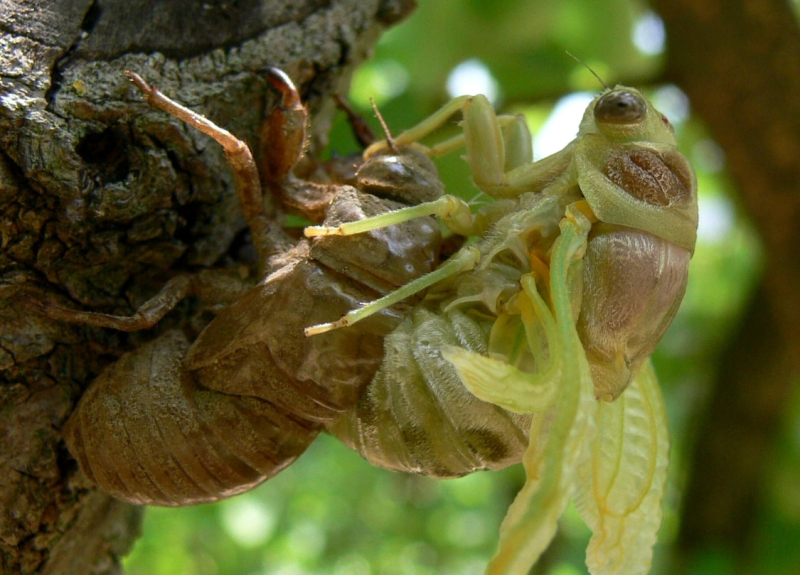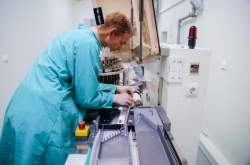Chitin
In nature, chitin has a protective and supporting function; it is responsible for the rigidity of exoskeletons of insects and crustacean, as well as cell walls of fungi and bacteria. In this sense, it is similar to cellulose, which plays the same role in cell walls of plants. Yet, according to the data from Russian Chitin Society, chitin is far more reactive. It can be processed into chitosan, a polymer that can be dissolved in dilute acid solutions, as well as react with other chemical substances. Chemists often call chitosan a constructor that can be used for creating different polymers. To obtain pure chitin, protein, calcium and other minerals are diluted and extracted from organic compounds that contain it.
"We use crustaceans, fungi and insects to obtain it. By the way, chitin was first discovered in champignons. The use of chitin and chitosan becomes wider with every year. This polysaccharide is now used in food supplements, drugs, burn medications, soluble surgical sutures, radiation protection and many other fields. Chitosan proved to be immensely useful, and is to be researched further", comments Valeriy Varlamov, head of the Russian Chitin Society.
Chitin in medicine
Chitosan reacts with other chemical substances well, so one can "attach" medication and receptors to the polymer's chain. Thus, the active substance is released only where necessary, without inducing toxicosis. What is more, chitosan itself is not toxic for living organisms, underlines professor Alexei Abdulov from the All-Russian Research and Technology Institute of Biological Industry.
 ITMO University. Alexei Abdulov
ITMO University. Alexei Abdulov
Chitosan can also be used as a dietary supplement. For instance, its low-molecular fraction is absorbed right into the blood and can work on immune system level. The mid-molecular fraction is an antibacterial component that suppresses the development of pathogenic organisms in one's intestinal tract. It also stimulates the formation of a film that protects the intestinal tract's mucosa from inflammation. The film dissolves quickly, which is also important from the medical point of view. The high-molecular fraction of chitosan acts as a sorbing agent for toxins inside the intestinal tract.
"There are many sorbing agents with harmful properties. Yet, chitin has none of them. What is more, it can sorb herbal extracts, which retain their useful properties in this bond and can be used as dietary supplements. Chitosan is also used in gels for healing stomatopathy or burns", adds Alexei Abdulov.
Chitosan has an anti-tumor effect, so it can be used for treating cancer, underlines Irina Misyakina, academic secretary of the Vinogradsky Institute of Microbiology. The substance lowers cholesterol levels, as it binds lipids and inhibits the absorption of fats. There is also research conducted on the use of chitosone in medical implants.
 ITMO University. Session of the Russian Chitin Society
ITMO University. Session of the Russian Chitin Society
Chitin and gene therapy
Gene therapy is a fast-developing field. This method allows negating a gene’s activity or replacing it. Yet, to do that one has to deliver the necessary gene information into the cell. Until now, viruses were mostly used for this, yet this approach is cancerogenus and expensive, underlines Andrei Kritchenkov from the St. Petersburg State Chemico-Pharmaceutical Academy. Chitosan allows delivering gene information a lot cheaper, and with no harmful consequences.
"You can adjust non-viral vectors for RNA deployment using chemical modifications. Chitosan is more effective than liposomes or cationic polymers, as it's more effective at binding DNA. Also, such systems are not toxic, and one can obtain them at room temperature", shares the scientist.
Chitin in food industry
Chitosan's absorption ability is used in brewing for disgorgement. The so-called "haze" in drinks comes from proteins, carbohydrates, live cells and oxalates. Chitosan can be used for getting rid of live cells, shares Tatyana Meledina from ITMO's Department of Food Biotechnology (Vegetable Stock).
Denis Baranenko, an Associate Professor for the department, shared about the use of chitosan for preserving fresh meat. It is covered with a film made of chitosan and some other substances (starch, cellulose and gelatin), so it doesn't lose moisture. The decrease of water's activity on the product's surface increases its shelf life. What's more, the chitosan film decreases the spread of microbes and bacteria in raw meat.
 ITMO University. Denis Baranenko
ITMO University. Denis Baranenko
"Regular fresh meat can be stored for no more than two days. By using chitosan, we can increase the shelf life by 1.5−2 times. In some events, it can be up to two weeks. What is more, a chitosan film is an ideal package, as it is almost invisible", explains Denis Baranenko.
Chitosan is also used for cloting whey proteins in the dairy industry, in the production of iodinated foods, and other different purposes.
During the session, ITMO’s representatives presented the university's opportunities for research on chitosan and its possible applications.






